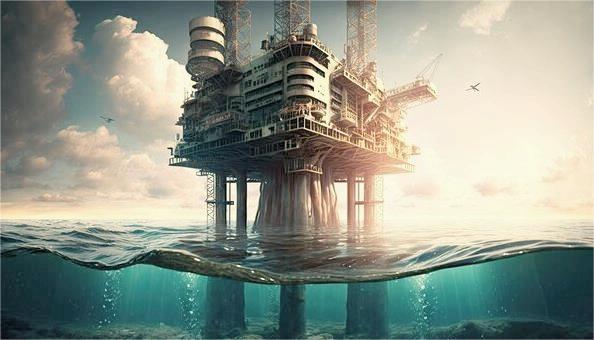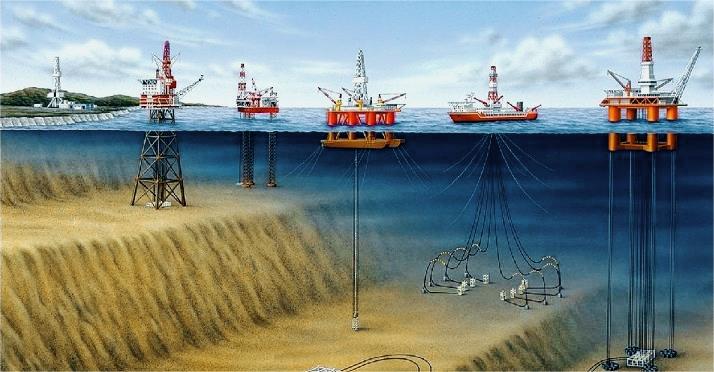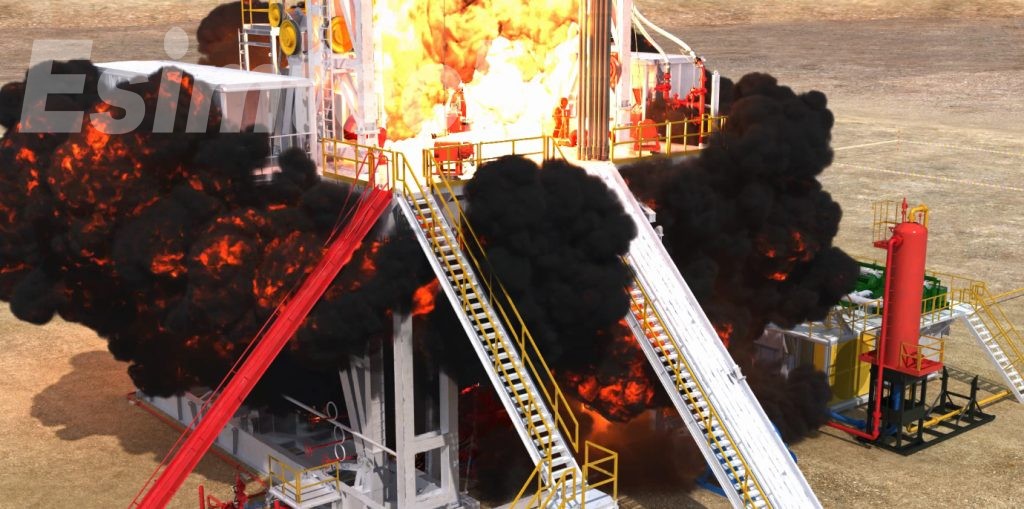A Comprehensive Guide to Oil Rig Underwater Operations
Oil rigs, imposing structures that dominate the sea's horizon, are renowned for their visible activities above the waterline. Yet, beneath the ocean's surface lies a lesser-known but equally intricate realm where essential oil rig operations unfold, extracting valuable resources concealed deep within the Earth's crust.
This article delves into the captivating world of oil rig underwater operations, exploring the equipment, challenges, and environmental considerations that make this aspect of the oil and gas industry both essential and distinctive. Additionally, we will discuss the crucial role that simulation plays in preparing workers for the complexities of these underwater operations.

Infrastructure for Oil Rig Underwater Operations
While the iconic structures of oil rigs command attention above water, a significant portion of operations occurs below the waterline. Subsea infrastructure, comprising pipelines, wells, and control systems, plays a pivotal role in extracting oil and gas from beneath the ocean floor.
Subsea Wells: Primary conduits for extracting hydrocarbons, equipped with components like blowout preventers (BOPs) to control well pressure and prevent blowouts.
Flowlines and Pipelines: Transport extracted oil and gas through a network of pipelines to the surface facility on the rig or to shore, designed to withstand harsh underwater conditions.
Control Systems: Complex, often remotely operated, systems that manage subsea infrastructure, monitoring well conditions, controlling valve operations, and providing critical data to surface operators.

Environmental Considerations of Oil Rig Underwater Operations
Oil rig underwater operations must adhere to strict environmental regulations to minimize their impact on marine ecosystems. Key considerations include:
Spill Response Plans: Comprehensive plans to address potential oil spills, including containment and cleanup strategies.
Marine Life Protection: Implementation of measures such as acoustic deterrent devices to minimize the impact of drilling and construction activities on marine mammals.
Sediment Management: Essential to prevent smothering of sensitive seabed ecosystems, with monitoring and control of sediment plumes.
Waste Disposal: Proper collection, treatment, and disposal of waste materials in accordance with environmental regulations.
Challenges for Oil Rig Underwater Operations
Operating beneath the sea presents unique challenges and complexities, requiring specialized expertise and equipment. Key challenges include:
Extreme Pressure: Subsea components must withstand extreme pressure conditions at great depths.
Corrosion and Erosion: Regular inspections and protective coatings are essential to combat the corrosive effects of seawater.
Remote Access: The inherently remote underwater environment requires specialized remotely operated vehicles (ROVs) for inspections, maintenance, and repairs.
Environmental Concerns: Stringent regulations and environmental impact assessments are in place to ensure responsible resource extraction.
Importance of Simulation in Oil Rig Underwater Operations
Simulation plays a pivotal role in mitigating risks associated with oil rig underwater operations, contributing to safety, efficiency, and environmental sustainability:
Training and Skill Development: Workers undergo simulation-based training to familiarize themselves with subsea equipment, practice emergency response procedures, and gain proficiency in operating ROVs safely.
Equipment Testing and Validation: Simulation is instrumental in testing and fine-tuning subsea equipment and control systems, identifying and rectifying potential issues before field deployment.
Emergency Response Drills: Simulated emergency scenarios allow operators to refine response protocols and coordination, ensuring personnel are well-trained for actual emergencies.

Environmental Impact Assessment: Simulation tools assess the potential environmental impact, helping operators develop strategies to minimize ecological footprint and comply with regulations.
Conclusion
Oil rig underwater operations, a vital yet often overlooked facet of the oil and gas industry, demand specialized equipment, expertise, and commitment to environmental stewardship. As technology advances, these operations will continue playing a significant role in meeting the world's energy needs. Simulation serves as a cornerstone for safety, efficiency, and sustainability in this underwater frontier, allowing workers to practice scenarios, enhance decision-making skills, and familiarize themselves with the equipment and systems encountered during subsea operations.
- Art
- Causes
- Crafts
- Dance
- Drinks
- Film
- Fitness
- Food
- Jogos
- Gardening
- Health
- Início
- Literature
- Music
- Networking
- Outro
- Party
- Religion
- Shopping
- Sports
- Theater
- Wellness
